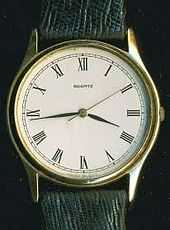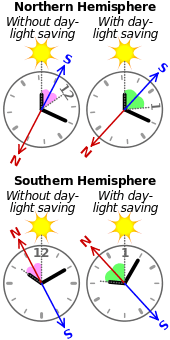Analog watch

Analog watch (sometimes spelled analogue watch) is an example of a retronym. It was coined to distinguish analog watches, which had simply been called "watches", from newer digital watches; see watch and clock.
The name refers to the design of the display,[1] regardless of the timekeeping technology used within the watch.
A digital watch is one in which the time is displayed as a series of digits, e.g. "13:37". An analog watch is one in which the display is not digital, but is indicated (typically) by the continuous motion of two or three rotating pointers or hands pointing to numbers arrayed on a circular dial (the hour hand's movement being analogous to the path of the Sun across the sky).
Using a watch and the sun as a compass

An analog watch can be used to locate north and south. The Sun appears to move in the sky over a 24-hour period while the hour hand of a 12-hour clock face takes twelve hours to complete one rotation. In the northern hemisphere, if the watch is rotated so that the hour hand points toward the Sun, the point halfway between the hour hand and 12 o'clock will indicate south. For this method to work in the southern hemisphere, the 12 is pointed toward the Sun and the point halfway between the hour hand and 12 o'clock will indicate north. During daylight saving time, the same method can be employed using 1 o'clock instead of 12.
There are relatively minor inaccuracies due to the difference between local time and zone time, and due to the equation of time. The method functions less well as one gets closer to the equator.